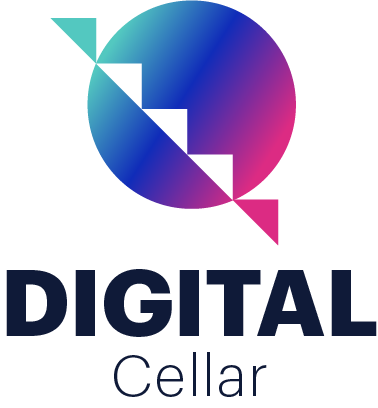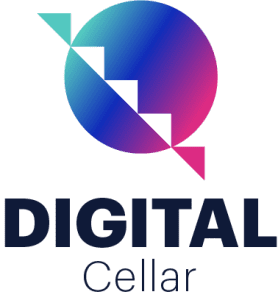Table of Contents
- 11 Key Challenges in the Current Digital Marketing Landscape
The new digital marketing era brings with it a wave of opportunities as well as a host of challenges. As technology evolves and consumer behaviours shift, businesses and marketers must adapt to stay ahead. Embrace your role as a digital marketer, where the ability to adapt to changing trends and technology is the key to success!
This article delves into the typical challenges faced in digital marketing and offers effective solutions to navigate through them.
11 Key Challenges in the Current Digital Marketing Landscape
Data Privacy and Regulations
Data privacy refers to the rights of individuals to control how their personal information is collected, used, and shared by companies online. With more businesses and services moving online, vast amounts of personal information are being collected, stored, and analysed and this includes details like names, email addresses, browsing habits, and purchase history. The primary goal of data privacy regulations is to ensure companies handle personal data responsibly. Regulations aim to protect consumers from data breaches, and misuse of their information, and to give them more control over their data.
Here are some key regulations of data privacy:
- GDPR (General Data Protection Regulation)
A landmark regulation from the European Union that sets guidelines for the collection and processing of personal information of individuals within the EU. It emphasises transparency, security, and the individual’s right to access and control their data. - CCPA (California Consumer Privacy Act)
Similar to GDPR, but specific to residents of California, USA. It grants consumers rights regarding their data, including the right to know what information is being collected and the right to have that information deleted.
These regulations will create impacts on the digital marketing side. There will be some challenges, such as navigating the complexities of various regulations, especially for businesses that operate across multiple regions with different laws and also
These regulations will create impacts on the digital marketing side. There will be some challenges, such as navigating the complexities of various regulations, especially for businesses that operate across multiple regions with different laws and also balancing personalised marketing and privacy stuff takes some careful planning and execution. Therefore, marketers must now ensure their practices comply with these and other regional regulations. This includes obtaining clear consent from individuals before collecting their data, providing options to access or delete their information, and ensuring the security of the data collected. Personalisation and targeting strategies must also be adjusted to remain effective without infringing on privacy rights. Marketers have to be more creative and ethical in how they engage audiences.
Data privacy and regulations in the digital marketing era are about ensuring that companies respect and protect individuals’ personal information. But for marketers, this could be the opportunity to build trust with consumers by emphasising privacy adopting best practices in data management and innovating in how they collect and use data responsibly.
Ad Blockers
Ad blockers are applications or browser extensions that remove or alter advertising content on a webpage. Their primary purpose is to improve the user experience by blocking pop-ups, banners, and other forms of intrusive ads that can slow down page loading times and distract from the content. The main reasons people use ad blockers are to enhance the browsing experience by reducing clutter, speeding up page loading times, and protecting privacy by blocking trackers that monitor online activity.
What are the implications of ad blockers in digital marketing? Well, ad blockers will directly affect the revenue of websites that rely on advertising by preventing ads from being served to a portion of their audience. This makes it challenging for marketers to reach their target demographics and measure campaign effectiveness accurately. Also, they will push marketers to think creatively about how to engage with their audience, often leading to more emphasis on content marketing, sponsored content, and social media engagement as alternative strategies.
There are challenges of ad blockers which will involve several strategies. Firstly, prioritise quality content creation. Focus on producing engaging material that adds value to your audience, which can prompt users to whitelist your website from ad blockers. Another approach is utilising native advertising, where ads seamlessly blend with the platform’s content, making them less obtrusive and prone to blocking.
Additionally, consider forming influencer partnerships to connect with your audience more organically and engagingly, sidestepping the impact of ad blockers. Lastly, explore subscription models, where users can opt for an ad-free experience by paying a subscription fee, presenting an alternative revenue stream for your website.
Strategies for Ad Blockers
The rise of ad blockers highlights the importance of considering the user experience in digital advertising. Marketers need to balance the need for visibility with respect for the audience’s preferences and privacy. While ad blockers present a hurdle in the new digital marketing landscape, they also encourage marketers to innovate and find more user-friendly ways to communicate with their audience. By focusing on value-driven content and ethical advertising practices, businesses can effectively navigate the challenges of ad blockers.
Saturation and Competition
Saturation occurs when there’s so much content and so many advertisements online that it becomes difficult for any single message to stand out. As digital platforms have become central to marketing strategies, the online space is now crowded with advertisements, content, and promotions from countless sources. With virtually every business establishing an online presence, competition is fiercer than ever. No matter how niche your product or service might seem, there’s likely someone else offering something similar. This competition isn’t just local; it’s global, meaning your business could be competing against brands from around the world.
The impacts on digital marketing will be:
- Increase in advertising costs.
More competition for ad space, especially on popular platforms like Google and Facebook, drives up costs. - Harder to Rank in Search Results.
As more content is created, it becomes increasingly difficult to rank well in search engine results, requiring more sophisticated SEO strategies.
Consumer Overwhelm. With so much content and so many ads, consumers can become overwhelmed, leading to decision fatigue and a tendency to ignore marketing messages.
Strategies for Saturation and Competition
To stand out in the competitive digital landscape, employing effective strategies is essential. One approach is to adopt niche marketing, honing in on a specific segment where your business can provide distinctive value or expertise. Emphasise quality over quantity when creating content, focusing on high-quality and engaging material that genuinely benefits your audience. Utilise personalisation by leveraging data and analytics to tailor marketing messages and offers, aligning them with the specific needs and preferences of your audience. Building lasting relationships is key; engage with your audience across various channels, such as social media and email marketing, fostering a loyal community around your brand. These strategies collectively contribute to establishing a strong and differentiated presence in the digital realm.
The digital landscape is constantly evolving, and what works today might not work tomorrow. Continuous learning, experimenting with new strategies, and staying up to date with digital marketing trends is essential for navigating saturation and competition. Saturation and competition might present significant challenges in the new digital marketing era, but on the other hand, they also push businesses to be more creative, focused, and customer-centric in their approaches. By finding ways to genuinely connect with and provide value to your audience, you can cut through the noise and make a lasting impression.
Keeping Up with Technology
Keeping up with technology in the new digital marketing era is akin to riding a fast-moving train; it’s essential to continuously adapt and learn to ensure you don’t get left behind. As digital technology rapidly evolves, it introduces new tools, platforms, and strategies that can significantly impact how businesses reach and engage with their audiences.
Understanding the importance of staying technologically relevant is crucial for businesses in today’s dynamic landscape. If you want to keep your game strong, you’ve got to ride the wave of new technologies. They set the bar higher for marketing effectiveness and efficiency, and those who hop on the tech train gain a sweet competitive edge. Plus, let’s talk about what customers want nowadays, they’re all about personalised and seamless experiences online.
To meet these expectations, you’ve got to keep your tech game strong. And here’s the fun part – tech advancements aren’t just about keeping up; they’re about sparking innovation. They open up new possibilities for solving problems, adding value, and shaking up how we market and deliver products and services. Services are marketed and delivered. By prioritising technological adaptation, businesses position themselves to thrive in a rapidly changing market and stay ahead of the curve.
Mastering the tech landscape comes with its fair share of challenges. Firstly, there’s the lightning-fast pace of change in technology. It evolves so quickly that marketers often find it a challenge to keep up with the latest trends and updates. Then there’s the matter of resource allocation. Adopting and adapting to new technologies demands both time and resources, which can pose a significant hurdle, especially for smaller businesses with limited capacities. Lastly, there’s the ongoing need for skill development. Staying on top of new digital tools and platforms requires continuous training and development efforts. So, in the tech-driven journey, these challenges are like speed bumps that businesses need to navigate to stay on the road to success.
It is very crucial to keep a vigilant eye on key areas that are steering the future. Artificial Intelligence (AI) and Machine Learning are at the forefront, revolutionising how businesses analyse data, personalise marketing efforts, and automate tasks. Meanwhile, social media remains a dynamic landscape with emerging platforms and continuous feature updates. Augmented Reality (AR) and Virtual Reality (VR) contribute to an immersive experience, presenting innovative ways to engage consumers. The surge in voice-activated devices, influencing online search behaviour, demands a recalibration of SEO strategies.
Strategies for Keeping Up with Technology
To stay abreast of these developments, continuous learning is essential. Dedicate time for yourself and your team to explore new technologies through courses, webinars, and industry publications. Networking is a valuable asset; actively engage in digital marketing communities, forums, and professional networks to exchange insights and experiences. Additionally, earmark a portion of your marketing budget for experimentation.
Testing new tools and strategies empowers you to uncover what works best for your business in this dynamic digital realm. Team up with tech pros and digital marketing experts (e.g.: Digital Cellar) for some solid advice and support. However, embrace a mindset of flexibility and openness to change. This attitude will not only help you navigate the technological landscape but also enable you to quickly leverage new opportunities as they arise.
Changing SEO Algorithms
SEO algorithms are complex systems used by search engines to determine where pages rank in search results. These algorithms take into account various factors, such as keywords, site speed, mobile-friendliness, and backlinks, to rank websites according to their relevance and authority.
The dynamism in these algorithms stems from the search engines’ commitment to delivering the best user experience by showcasing the most pertinent and high-quality content. Updates help to combat spam and manipulative practices that try to game the system, ensuring fair competition among websites.
However, these changes can make life tricky for marketers and website owners. Staying informed and understanding the impact of SEO strategies can be daunting. What might have been effective yesterday may not hold today. Businesses often find themselves adjusting their SEO tactics in response to these dynamic algorithm updates. There is also the risk of penalties if a website fails to comply with search engine guidelines.
Strategies for Algorithm Changes
To navigate these changes effectively, focusing on quality content is paramount. Consistently creating high-quality, relevant content. Optimising for mobile, enhancing user experience, and adopting ethical SEO practices are crucial. Staying informed through reputable SEO sources and embracing a long-term view, viewing SEO as an ongoing process rather than a one-time task, aligns efforts with search engines’ goals.
Consumer Expectations for Personalisation
In the new digital marketing era, consumer expectations for personalisation have significantly evolved. Today’s consumers not only desire but expect content, offers, and experiences that are tailored specifically to their preferences, interests, and behaviour. This shift towards personalisation reflects a broader change in how consumers interact with brands online. Personalisation in digital marketing means delivering content and messages that are customised to the individual user. This could be anything from a personalised email greeting to product recommendations based on past purchases or browsing behaviour.
The shift in consumer expectations is intricately tied to the emergence of big data and advanced analytics in the marketing landscape. These tools have empowered marketers to gain unprecedented insights into their audiences. Consequently, consumers have become accustomed to a heightened level of personalisation when interacting with digital platforms. Aware that companies possess the means to fine-tune their marketing efforts, consumers now expect businesses to leverage these tools proactively to enhance the overall customer experience. The evolution of data-driven capabilities has set a new standard, shaping the expectations of consumers and influencing the way companies approach personalisation in their marketing strategies.
As big data and advanced analytics have taken centre stage in digital marketing, marketers now have unparalleled insights into their audiences, reshaping the dynamics of the industry. This shift has changed what consumers expect from companies—they now anticipate a higher degree of personalisation across various digital platforms. People know that businesses have the tools to tailor their marketing efforts, and they want companies to use these tools to enhance their overall experience. This shift in expectations highlights a new era where personalisation is a key factor in the interaction between businesses and consumers. As a result, companies are adapting their strategies to meet these changing demands and provide a more personalised and engaging experience.
Marketers face several challenges in terms of personalisation. Data management poses a significant hurdle, requiring efficient collection, analysis, and responsible utilisation of large volumes of data. Striking the right balance between personalisation and data privacy is crucial to maintaining consumer trust, as privacy concerns continue to be a prominent issue. Lastly, keeping pace with ever-evolving technologies is a continuous challenge. Marketers must stay updated on the latest tools and innovations that facilitate effective personalisation to ensure their strategies remain relevant and impactful in the dynamic digital landscape.
Strategies for Effective Personalisation
Begin with gaining a deep understanding of your audience through data analytics, providing valuable insights into their behaviour and preferences. Segmenting your audience based on demographics, interests, or behaviour allows for more targeted and impactful marketing. Leveraging marketing automation tools is crucial for delivering personalised content at scale, ensuring efficiency and consistency.
Embrace a culture of continuous improvement by regularly testing different personalisation strategies and learning from the results. This iterative process enables you to refine your approach, adapting to the evolving needs and expectations of your audience. As technology continues to advance, the possibilities for personalisation will expand. This could include more sophisticated use of AI for predictive personalisation, where marketing efforts anticipate the needs and interests of consumers before they even express them.
The Rise of Voice Search
Voice search allows users to use voice commands to search the internet, websites, or an app. Instead of typing queries into a search engine, users speak into their devices. This technology relies on natural language processing to understand the user’s intent and provide relevant results. This represents a significant shift in how people find information online, driven by the increasing use of digital assistants like Siri, Alexa, and Google Assistant. In this new digital marketing era, voice search is changing the landscape for SEO (Search Engine Optimisation) and content strategy.
Voice search becoming popular because of its convenience. Speaking is faster and more convenient than typing, especially when on the go or multitasking. Additionally, significant advancements in artificial intelligence (AI) and machine learning have substantially improved the accuracy of voice recognition systems, enhancing the overall user experience. The increased prevalence of mobile devices and the widespread ownership of smart speakers have further contributed to the rise of voice search, making it a readily accessible and preferred option for users across various contexts.
The impact of voice search on digital marketing is profound and has led to notable shifts in strategies. With voice searches often being longer and more conversational compared to text queries, there is a shift in how keywords are targeted in SEO and content creation. This emphasises the importance of adapting to a more natural and conversational language to align with user behaviour. Local SEO gains prominence as many voice searches are centred around obtaining local information, such as directions or information about nearby businesses.
This necessitates a heightened focus on local SEO strategies to enhance visibility in relevant search results. Moreover, the prevalence of voice assistants reading out featured snippet results from Google makes securing a spot in these snippets increasingly crucial for brands aiming to improve their visibility and effectiveness in voice search scenarios.
There are some challenges and yet, opportunities for marketers:
- Adapting content to align with natural language queries is a key challenge, requiring marketers to craft content that effectively addresses questions conversationally. This shift emphasises the need for a more casual and approachable tone in content creation.
- Optimising for local search is another critical aspect, urging businesses to ensure their online presence is finely tuned for local queries. This involves meticulous attention to the accuracy and completeness of business information across directories and their websites.
- focus on mobile-friendly design is paramount as a substantial portion of voice searches occurs on mobile devices. Ensuring a seamless and responsive experience on mobile platforms becomes integral to meeting the demands of the evolving landscape shaped by voice search technology.
Strategies for Optimising for Voice Search
However, you can implement some strategies to optimise voice search. Adopting a natural language and question-based approach in content creation proves effective, aligning with the conversational nature of voice queries. Prioritising site speed emerges as a crucial factor, acknowledging the expectation of swift responses from voice search users. Optimising for local search amplifies digital presence, involving actions such as claiming Google My Business listings and ensuring consistent NAP (Name, Address, Phone Number) details across various online platforms. As technology continues to evolve, voice search is expected to become even more integrated into our daily lives. Marketers and businesses will need to continue adapting their strategies to stay ahead.
Social Media Algorithm Changes
Social media algorithms are complex formulas that platforms like Facebook, Instagram, Twitter, and LinkedIn use to determine what content appears in a user’s feed, and in what order. These algorithms take into account various factors, such as user interactions, relationships, content types, and timeliness, to deliver a personalised feed to each user. These platforms continuously refine their algorithms to improve the user experience, ensuring users see content that is most relevant and engaging to them. Changes are also made to encourage genuine interactions, reduce spam, and adapt to evolving user behaviour and preferences.
Algorithm changes can have quite an impact on digital marketing. When it changes, the visibility and popularity of your content can be affected. Content that used to be seen by many people might not reach as many anymore. This means marketers have to adjust how they create content. It’s essential to make content that connects with your audience and keeps them engaged. Additionally, these changes often make paid advertising more important to maintain visibility.
Strategies for Adapting to Algorithm Changes
So, in the world of digital marketing, staying flexible and adapting to these shifts is crucial for success. Explore our in-depth article for more insightful information on navigating these social media platforms to optimise your strategies here. Social media algorithm changes require marketers to be agile, continuously evolving their strategies to ensure their content remains visible and engaging. By focusing on creating quality content and fostering genuine interactions, businesses can navigate these changes and maintain a strong social media presence.
Measuring ROI
ROI in digital marketing measures the profitability of your marketing efforts. It calculates the return you get on your investment in campaigns, whether that’s through increased sales, leads, or other goals, compared to the cost of running those campaigns.
Measuring ROI has its challenges, and it’s a bit like dealing with a data overload. With so much information floating around, it can be tricky to figure out which metrics matter. Plus, staying on top of the latest technologies means you’re in for a constant learning curve and ongoing investments in tools and training. And let’s not forget about the ever-changing whims of consumer behaviour. What once worked like a charm might not be as effective now, thanks to shifts in what people prefer.
Strategies for Measuring ROI
Boosting your ROI is going to involve strategic moves. Start by setting clear goals for your campaigns, whether it’s about generating leads, ramping up website traffic, or boosting sales. Dive into the data realm using analytics tools to track performance, examining metrics like click-through rates and conversion rates to understand your ROI. Precision is key, so use customer data to create detailed buyer personas, allowing you to target your marketing efforts more effectively with personalised campaigns that often result in higher conversion rates. Don’t forget the testing phase – run A/B tests on your ads, landing pages, and other marketing elements to figure out what hits the right note.
It’s a continuous process of tweaking and refining strategies for that ever-improving ROI. And when it comes to allocating your budget, analyse which marketing channels (social media, email, search engines) bring in the best returns, and invest wisely. Finally, shift your focus beyond immediate sales to consider strategies that enhance the lifetime value of customers, think of loyalty programs and savvy email marketing.
Integration Across Channels
Channel integration involves coordinating your marketing messages, branding, and call-to-actions across all digital platforms and touchpoints where your audience engages with your brand. The aim is to ensure consistency in your brand’s voice, style, and messaging, regardless of where a consumer encounters your brand online.
Integration plays a pivotal role in ensuring a seamless and effective marketing strategy. It ensures that when people see something about your brand on one platform, like social media, they can easily find the same thing on your website. This consistency helps build trust with your audience. Integration also makes things smoother for your customers. Their journey will be easier, making them happier and more engaged with your brand.
Think of it like this: when everything works together, you save time and effort. You will be using your resources (like time and money) in the smartest way possible. This efficiency is key to making your marketing efforts more impactful. And the best part? Integrated channels help you collect lots of useful data. This data gives you insights into what your customers like and how they behave. With these insights, you can make your marketing strategies even better, always staying in tune with what your audience wants.
Integrating different marketing channels can be a bit tricky. For businesses without a dedicated marketing team, managing multiple channels while making sure the message stays consistent can be complex. Also, digital marketing platforms are always changing, and keeping up with these changes while keeping your strategy aligned across all channels can be a bit challenging. Another thing to deal with is data silos. Different platforms collect data in different ways, creating separate pockets of information. Bringing all this data together for a unified view of customer behaviour can be a bit difficult. To tackle these challenges, you need a good plan, the ability to adapt to changes in the industry, and solutions to effectively combine different sets of data.
Strategies for Effective Integration
To ensure a seamless and effective integration of your marketing efforts, it’s essential to follow some key strategies. Begin by developing a unified digital marketing strategy that clearly outlines the roles of each channel in achieving your overall goals. Utilise cross-channel marketing tools like CRM systems and automation platforms to support integrated efforts. Consistency is crucial. Maintain a uniform brand identity across all channels, including logos, colour schemes, tone of voice, and key messages.
Enhance customer experience by personalising interactions and content using data from various channels. Lastly, stay proactive by monitoring the performance of your integrated strategy and be ready to make adjustments based on real-time insights. This approach ensures a cohesive and impactful integration of your marketing channels. They help in managing and analysing data from various channels, enabling personalised and consistent marketing efforts.
Building Trust in an Era of Fake News
Building trust with your audience has become more challenging yet more important than ever, particularly in an environment where misinformation and “fake news” are prevalent. Consumers are increasingly sceptical of the information they find online, making it crucial for brands to establish and maintain credibility. “Fake news” refers to misinformation or fabricated content presented as legitimate news. With the rise of social media, such content can spread quickly, creating an environment of distrust and scepticism among consumers.
This phenomenon makes it harder for genuine brands to convey their messages and for consumers to distinguish between what’s real and what’s not.
The prevalence of misinformation has led to higher consumer scepticism, making individuals more cautious about trusting content disseminated by brands. This scepticism, in turn, significantly impacts engagement and conversion rates as consumers approach digital content with a discerning eye. Beyond individual scepticism, brands also face the risk of damaging their reputation by being associated with or perceived as endorsing fake news. This potential harm to brand reputation underscores the importance of authenticity and transparency in digital marketing efforts.
Ultimately, the effectiveness of digital marketing campaigns hinges on addressing these trust-related challenges and ensuring that target audiences can trust the authenticity of the content being presented. Building and maintaining trust have become integral aspects of navigating the complex digital marketing landscape.
Strategies for Building Trust
- Transparency: Be open about your business practices, sourcing, and motivations. Transparency fosters trust and credibility.
- Quality Content: Invest in creating high-quality, accurate, and informative content that provides value to your audience.
- Fact–Checking: Ensure all information you publish or share is verified and reliable. This is especially important when reposting content from other sources.
- Engage Responsibly on Social Media: Monitor your social media channels and engage in conversations responsibly. Address misinformation and clarify inaccuracies related to your brand.
- Use Trusted Sources: When citing statistics or news, use information from well-respected and reliable sources.
- Customer Reviews and Testimonials: Showcase genuine reviews and testimonials from your customers. Real customer experiences can significantly enhance trust.
- Professional Accreditations: Display any relevant certifications, accreditations, or endorsements from recognised industry bodies.
Building personal connections with your audience through genuine engagement and personalised content can help reinforce trust. Showing the human side of your brand makes it more relatable and trustworthy. As consumers become more discerning, brands must adapt their strategies to meet these changing expectations. Prioritising authenticity, accuracy, and engagement is key to building and maintaining trust in the digital age. By focusing on building genuine relationships with your audience and establishing your brand as a credible source of information, you can navigate the complexities of the current landscape and foster lasting trust with your consumers.
This content was helped created by the use of AI (Artificial Intelligent) and thoroughly edited, fact-checked, and proofread by human to cater to audience




